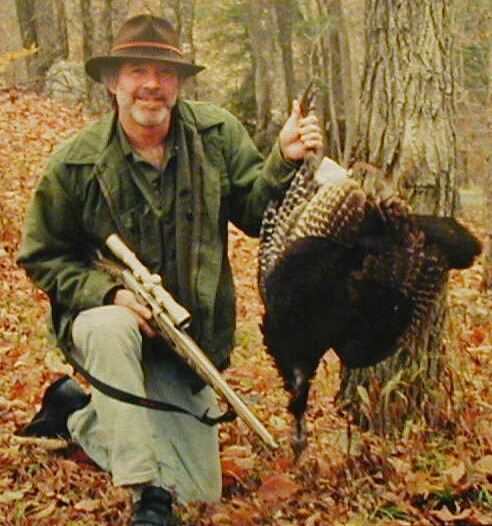
picture compliments of my Mannlicher style Ruger 10/22 and Simmons 4X scope
Floating and properly bedding a rifle pays off when needed. I held high on this turkey aiming at center of neck expecting bullet to drop into heart/lung area. I misjudged distance and hit the turkey where I aimed - 63 yards. Don't ask me to do it again.